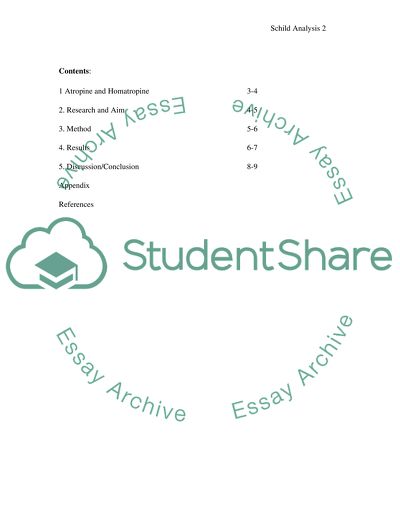Cite this document
(Cholinergic Antagonist Homatropine: Validity of Schild Analysis Lab Report Example | Topics and Well Written Essays - 1500 words, n.d.)
Cholinergic Antagonist Homatropine: Validity of Schild Analysis Lab Report Example | Topics and Well Written Essays - 1500 words. https://studentshare.org/medical-science/1545570-physiology-and-pharmacology
Cholinergic Antagonist Homatropine: Validity of Schild Analysis Lab Report Example | Topics and Well Written Essays - 1500 words. https://studentshare.org/medical-science/1545570-physiology-and-pharmacology
(Cholinergic Antagonist Homatropine: Validity of Schild Analysis Lab Report Example | Topics and Well Written Essays - 1500 Words)
Cholinergic Antagonist Homatropine: Validity of Schild Analysis Lab Report Example | Topics and Well Written Essays - 1500 Words. https://studentshare.org/medical-science/1545570-physiology-and-pharmacology.
Cholinergic Antagonist Homatropine: Validity of Schild Analysis Lab Report Example | Topics and Well Written Essays - 1500 Words. https://studentshare.org/medical-science/1545570-physiology-and-pharmacology.
“Cholinergic Antagonist Homatropine: Validity of Schild Analysis Lab Report Example | Topics and Well Written Essays - 1500 Words”. https://studentshare.org/medical-science/1545570-physiology-and-pharmacology.


